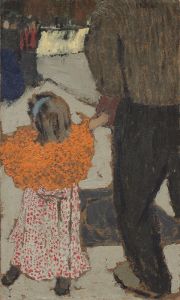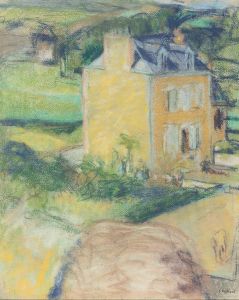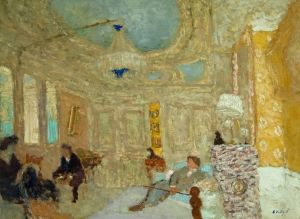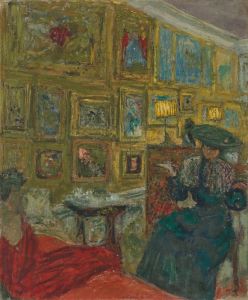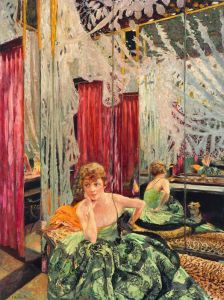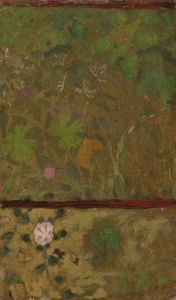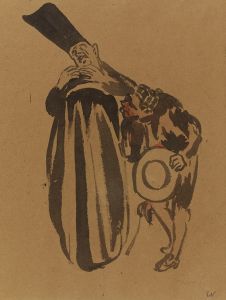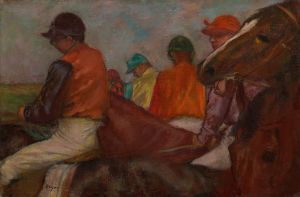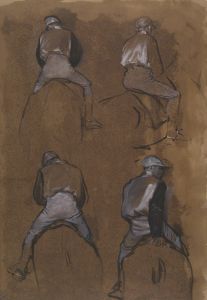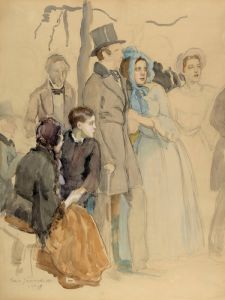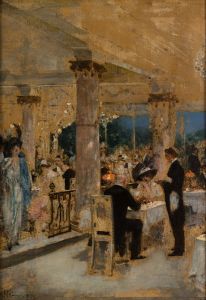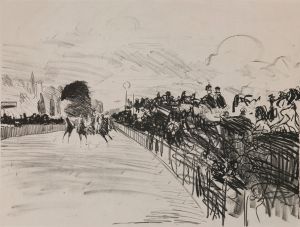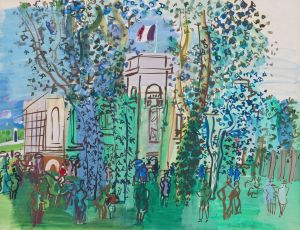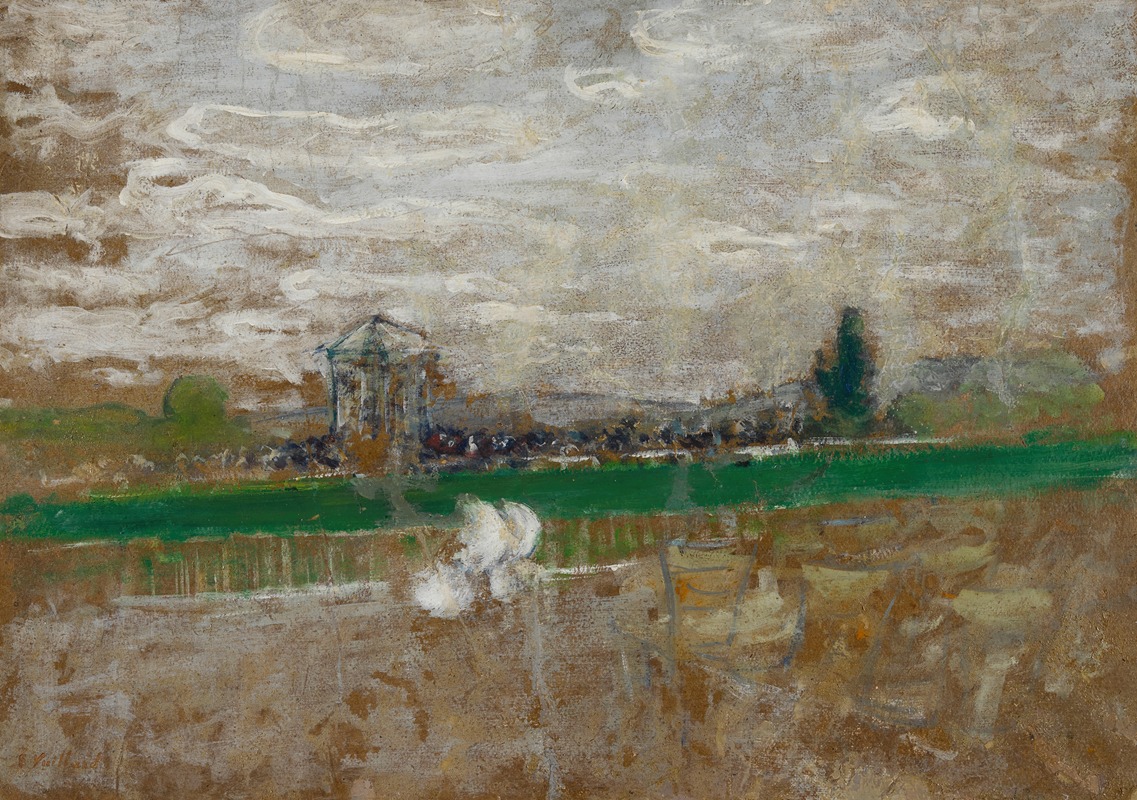
Champ de Course
A hand-painted replica of Édouard Vuillard’s masterpiece Champ de Course, meticulously crafted by professional artists to capture the true essence of the original. Each piece is created with museum-quality canvas and rare mineral pigments, carefully painted by experienced artists with delicate brushstrokes and rich, layered colors to perfectly recreate the texture of the original artwork. Unlike machine-printed reproductions, this hand-painted version brings the painting to life, infused with the artist’s emotions and skill in every stroke. Whether for personal collection or home decoration, it instantly elevates the artistic atmosphere of any space.
Édouard Vuillard, a prominent French painter associated with the Nabi movement, created the painting "Champ de Course" during his prolific career in the late 19th and early 20th centuries. Vuillard is renowned for his intimate interior scenes and his ability to capture the nuances of domestic life, often using a rich tapestry of colors and patterns. His work is characterized by a unique blend of Impressionism and Symbolism, with a focus on the emotional and psychological depth of his subjects.
"Champ de Course," which translates to "Racecourse" in English, is one of Vuillard's works that steps outside his typical domestic interiors to explore a more public and dynamic setting. This painting reflects Vuillard's interest in capturing the vibrancy and movement of outdoor scenes, a theme that was less common in his oeuvre but nonetheless significant. The painting depicts a scene at a racecourse, a popular social venue in France during Vuillard's time, where people gathered to watch horse races, socialize, and enjoy leisure time.
Vuillard's approach to this subject matter is consistent with his broader artistic style. He employs a subtle palette and a keen attention to detail, capturing not just the physical appearance of the racecourse but also the atmosphere and mood of the event. The composition likely includes figures and horses, rendered with Vuillard's characteristic softness and fluidity, which convey a sense of motion and energy. The use of color and light in "Champ de Course" would be expected to reflect Vuillard's interest in the interplay between different elements of the scene, creating a harmonious and immersive experience for the viewer.
As with many of Vuillard's works, "Champ de Course" may also demonstrate his interest in the relationships between people and their environments. The painting likely explores how individuals interact with the space of the racecourse, as well as with each other, offering insights into the social dynamics of the time. Vuillard's ability to capture these interactions with sensitivity and nuance is a hallmark of his artistic vision.
While specific details about the creation and exhibition history of "Champ de Course" are not extensively documented, Vuillard's work as a whole has been widely studied and celebrated. His contributions to the Nabi movement and his influence on subsequent generations of artists are well recognized. Vuillard's paintings are held in numerous prestigious collections around the world, and his work continues to be the subject of exhibitions and scholarly research.
In summary, "Champ de Course" exemplifies Édouard Vuillard's ability to extend his artistic exploration beyond domestic interiors to capture the vibrancy of public life. Through his distinctive style and attention to detail, Vuillard offers a window into the world of the racecourse, inviting viewers to engage with the scene on both an aesthetic and emotional level.





